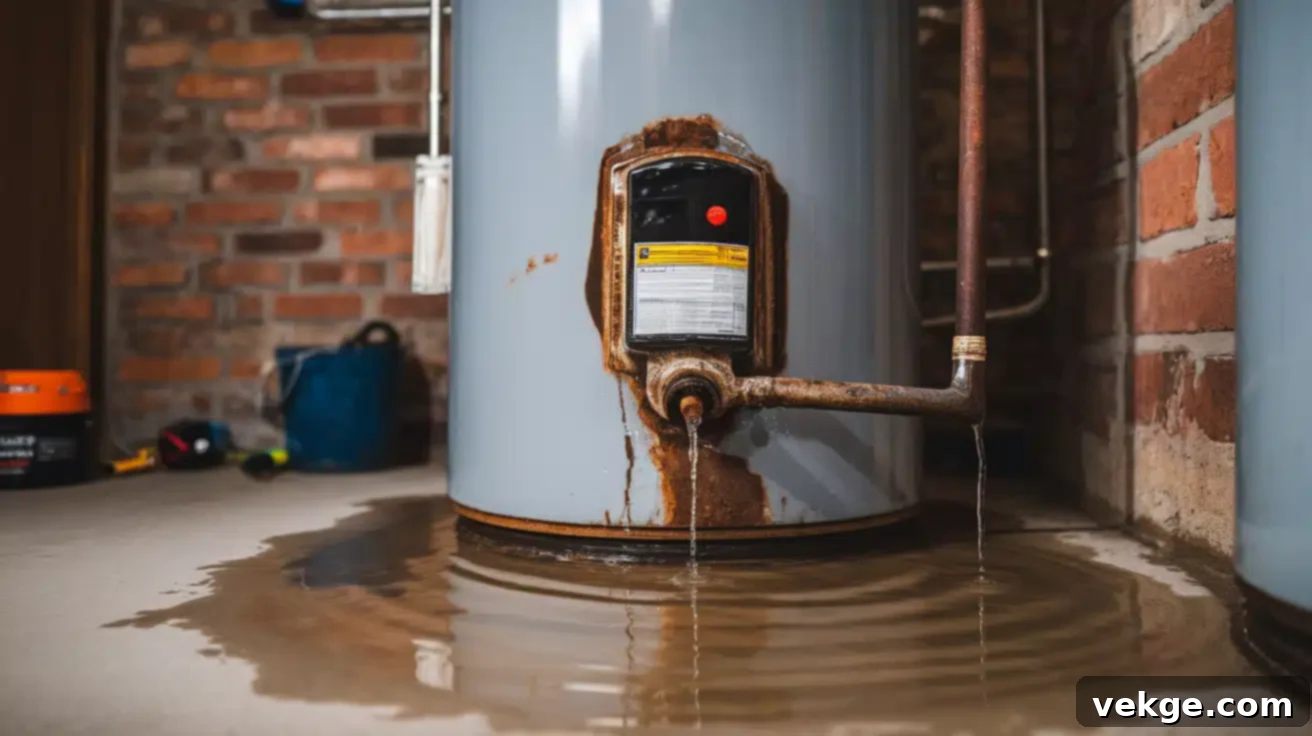Silence Your New Water Heater: A Comprehensive Guide to Fixing Noises
A peaceful home environment can quickly be disrupted by the unexpected sounds of a noisy water heater. This can be particularly frustrating when it’s a brand-new installation, an appliance you expect to operate flawlessly and silently for years to come. Many homeowners find themselves puzzled by the knocking, popping, screeching, or rumbling emanating from their recently installed unit, wondering why such a crucial system isn’t performing as anticipated.
The good news is that while a noisy new water heater is a common issue, most of these problems are identifiable and resolvable. Understanding the root causes behind these bothersome sounds is the first step towards a quieter, more efficient hot water supply. This comprehensive guide is designed to empower you with the knowledge and practical solutions needed to diagnose, address, and prevent various types of water heater noises. From simple DIY fixes to knowing when professional help is essential, we’ll cover everything to help you restore tranquility and ensure your new water heater runs smoothly and quietly.
Why is Your New Water Heater Making Noises?
Even though you’ve just invested in a new water heater, it’s not immune to developing noises. These sounds often indicate underlying issues that, if addressed promptly, can prevent more significant problems down the line. Let’s delve into the primary reasons why your new water heater might be creating a racket:
- Sediment Buildup: Surprisingly, even a new water heater can begin accumulating sediment quickly, especially in areas with hard water. Water contains various minerals, primarily calcium and magnesium, along with other microscopic debris. Over time, these particles settle at the bottom of the water heater tank. As the heating element attempts to warm the water, it also heats this layer of sediment. Steam bubbles form beneath the sediment layer and then burst through, creating the distinctive popping or rumbling sounds. This buildup not only causes noise but also reduces heating efficiency and can shorten the lifespan of your unit.
- Water Hammer: This common plumbing phenomenon occurs when the flow of water in your pipes suddenly stops or changes direction. The momentum of the moving water causes a pressure wave to reverberate through the pipes, resulting in a loud banging or hammering noise. While not strictly a water heater issue, the sounds can often be heard near the unit because it’s a central point of water flow. This can happen when faucets are abruptly turned off, or when appliances like washing machines or dishwashers quickly shut off their water supply.
- Loose Components or Valves: Vibrations and unusual sounds can also arise from loose parts within or around your water heater. This could include loose heating elements (in electric models), an unsecured dip tube, or even the pipes themselves if they are not properly strapped or insulated. Partially closed or faulty shut-off valves and pressure relief valves can also restrict water flow, leading to whistling or screeching noises as water is forced through a narrow opening. During installation, if components aren’t tightened correctly, these issues can surface surprisingly quickly.
- Expansion and Contraction: As water heats up, it expands. This expansion can sometimes create subtle creaking or groaning noises as the tank and pipes react to temperature changes. While usually minor, if the expansion tank is not functioning correctly or is absent, the pressure buildup can exacerbate these sounds or lead to more significant issues.
Understanding these common causes is the crucial first step. Once you can identify the likely culprit behind your water heater’s specific noise, you’re well-equipped to pursue the most effective diagnostic and repair strategies, ensuring your new unit operates quietly and efficiently as intended.
How to Diagnose and Fix Different Water Heater Noises
The type of noise your water heater makes often provides a significant clue as to its cause. By listening carefully, you can narrow down the potential problems and apply targeted solutions. Here’s how to diagnose and address various water heater sounds:
1. Popping or Rumbling
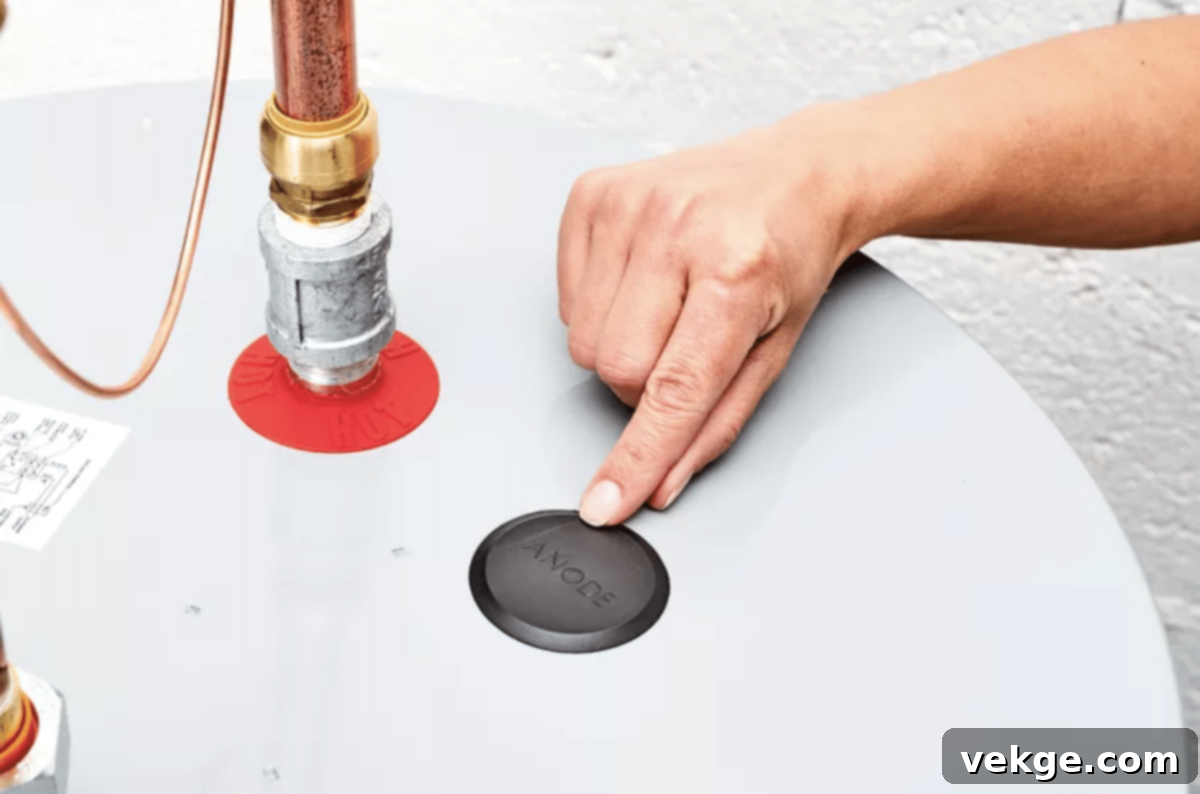
These are perhaps the most common noises associated with water heaters and almost always indicate sediment buildup at the bottom of the tank. As the heating element warms the water, it also heats the layer of mineral deposits. Pockets of water trapped beneath this sediment turn into steam, which then bubbles up and bursts through the sediment layer, creating the popping or rumbling sounds. This issue is particularly prevalent in areas with hard water, where mineral deposits accumulate faster.
Solutions:
- Flush the Tank Regularly: This is the most effective and often the simplest solution. Draining and flushing your water heater annually (or more frequently in hard water areas) helps remove accumulated sediment. This process involves turning off the power/gas, connecting a hose to the drain valve, opening a hot water tap, and allowing the tank to drain until the water runs clear.
- Consider Descaling Agents: For severe sediment buildup, chemical descaling agents can be introduced into the tank to help break down stubborn mineral deposits, making them easier to flush out. Always follow manufacturer instructions carefully when using such products.
- Install a Water Softener: If you live in a hard water area, installing a whole-house water softener can prevent future sediment accumulation by removing calcium and magnesium before they enter your plumbing system, significantly extending the life and efficiency of your water heater.
2. Screeching or Whistling
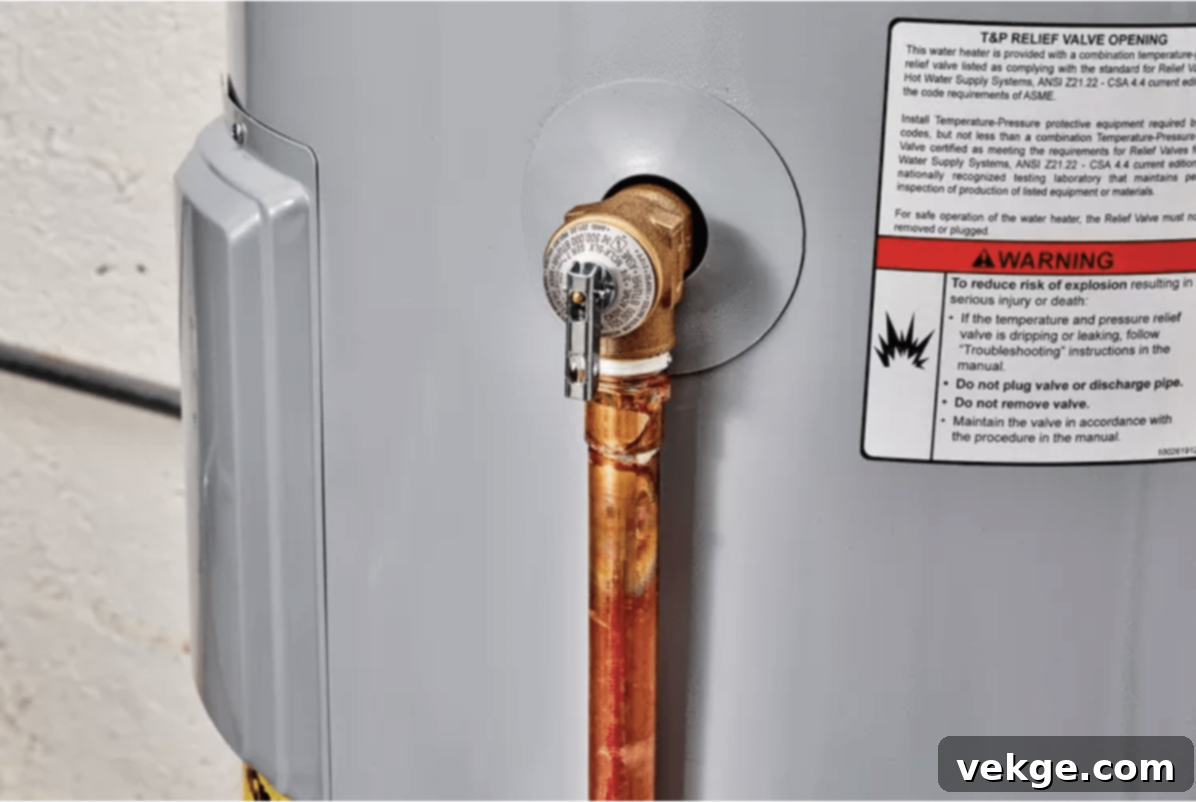
High-pitched noises like screeching or whistling typically point to restricted water flow. This often occurs when water is forced through a partially closed valve or an obstruction in the water lines. These sounds can also indicate a problem with the temperature and pressure relief (T&P) valve, which might be struggling to release excess pressure or could be faulty itself.
Solutions:
- Check All Valves: Inspect all shut-off valves around the water heater (inlet and outlet) to ensure they are fully open. A partially closed valve creates a narrow opening that causes water to whistle as it passes through. Also check any shut-off valves for nearby faucets or appliances that might be causing flow restriction.
- Inspect Water Lines for Blockages: Sediment, debris, or even kinks in flexible water lines can restrict flow. Trace the water lines leading to and from the heater. If you suspect an obstruction that is difficult to access or remove, or if the T&P valve is the source of the noise, it’s best to consult a professional plumber.
- Test and Replace T&P Valve: A malfunctioning T&P valve can produce whistling sounds. While you can carefully test it by briefly opening the lever, if it continues to make noise or seems faulty, it should be replaced by a qualified technician for safety reasons.
3. Sizzling or Hissing
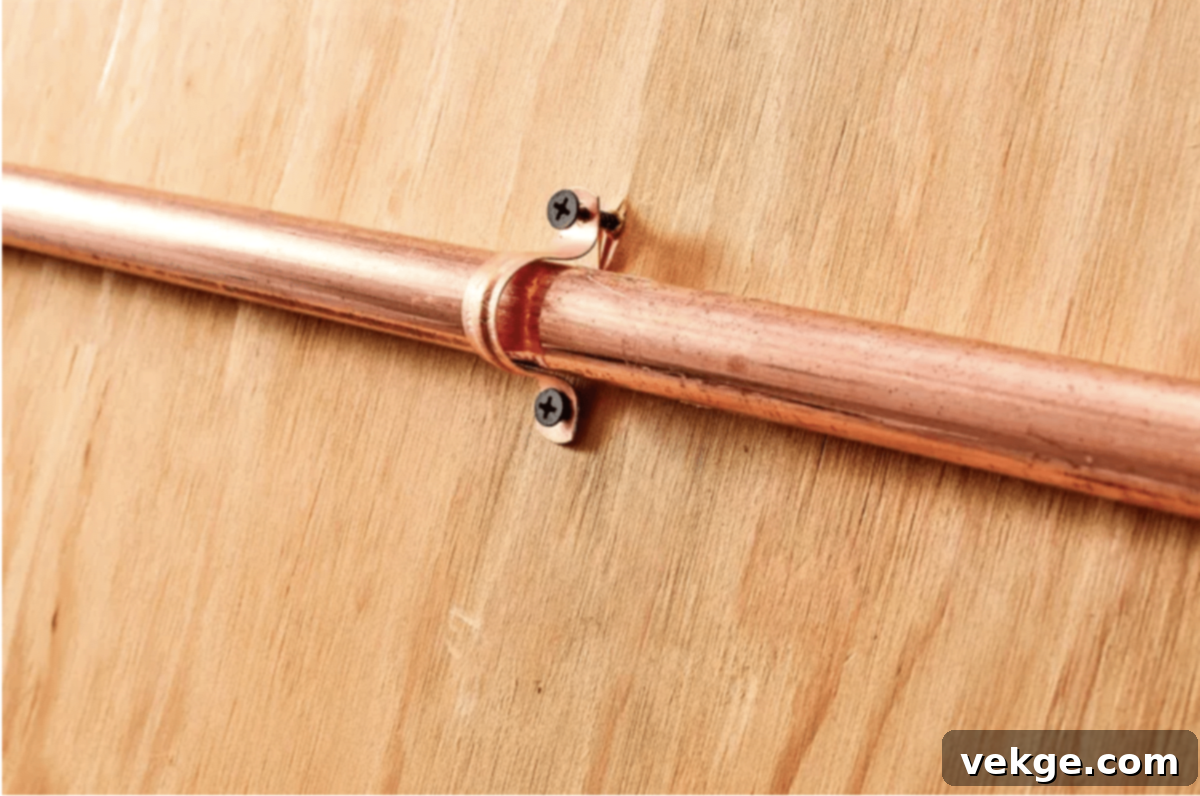
Sizzling or hissing sounds often indicate issues related to heat and water interaction outside the tank or directly on heating elements. In electric water heaters, these sounds frequently result from heating elements that are caked with sediment, causing them to overheat and sizzle. For gas heaters, it could indicate condensation dripping onto the burner. Critically, these noises may also suggest a small leak in the tank itself or its connections, with water dripping onto a hot surface and vaporizing.
Solutions:
- Flush the Tank and Inspect Heating Elements: Regular flushing prevents sediment buildup on electric heating elements, which can reduce their efficiency and lifespan. If you have an electric water heater and hear sizzling, carefully turn off the power, drain the tank, and inspect the elements for excessive mineral deposits. In some cases, cleaning or replacing the elements might be necessary.
- Check for Leaks: For both electric and gas heaters, meticulously inspect the tank, connections, and the area around the T&P valve for any signs of moisture or drips. Even a tiny leak can cause sizzling on a hot surface. If a leak is found, especially from the tank itself, professional help is required immediately as it often signals a failing tank.
- Address Condensation (Gas Heaters): If you have a gas water heater, ensure proper ventilation and check for excessive condensation around the burner assembly. Sometimes a cold exhaust flue can cause condensation that drips onto the hot burner. This might require professional adjustment or inspection of the venting system.
4. Banging or Hammering
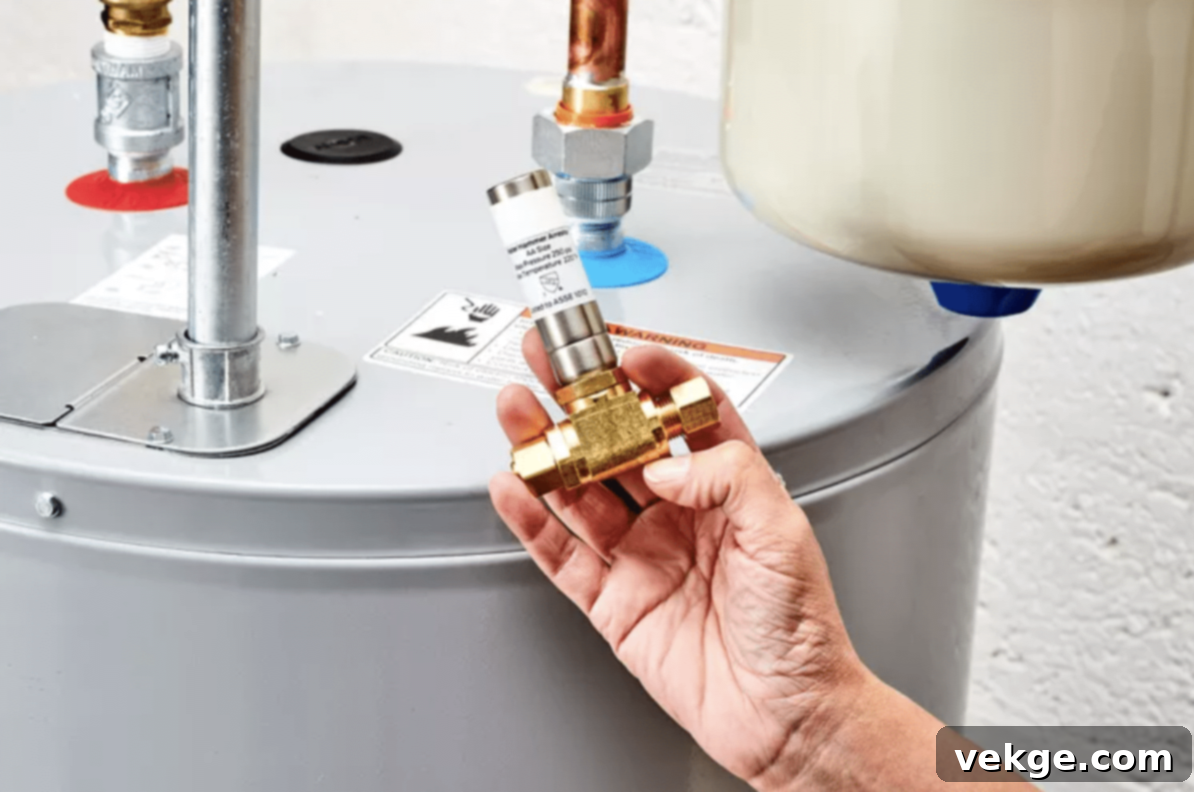
These loud, percussive sounds are the classic signs of water hammer. Water hammer occurs when the flow of water in your pipes is abruptly stopped or changed, creating a shockwave that travels through the plumbing system. The intensity of these noises can increase significantly if pipes are loose, unsecured, or improperly strapped, allowing them to vibrate and strike against walls or other components.
Solutions:
- Install a Water Hammer Arrestor: These devices are designed to absorb the shock created by sudden pressure changes in the water lines. Installing them near the source of the water hammer (e.g., specific fixtures or the main water line) can effectively dampen the pressure waves and eliminate the banging.
- Adjust Overall Water Pressure: If your home’s water pressure is excessively high, it can exacerbate water hammer. Consider installing a pressure reducing valve (PRV) on your main water line to maintain a consistent, safe pressure level (typically between 40-80 psi). This will reduce strain on your entire plumbing system, including the water heater.
- Secure Loose Pipes: Inspect visible hot and cold water pipes leading to and from your water heater, as well as throughout your home. Use pipe straps, hangers, or insulation to secure any loose sections that might be vibrating or banging against structural elements. Adding pipe insulation can also help reduce noise by cushioning impact and absorbing some of the vibrations.
Preventive Measures to Stop Noises Before They Start
The best way to deal with water heater noises is to prevent them from occurring in the first place. Proactive maintenance and smart installations can significantly extend the life of your unit and ensure a consistently quiet operation. Implementing these preventive measures will save you headaches and potential repair costs down the line.
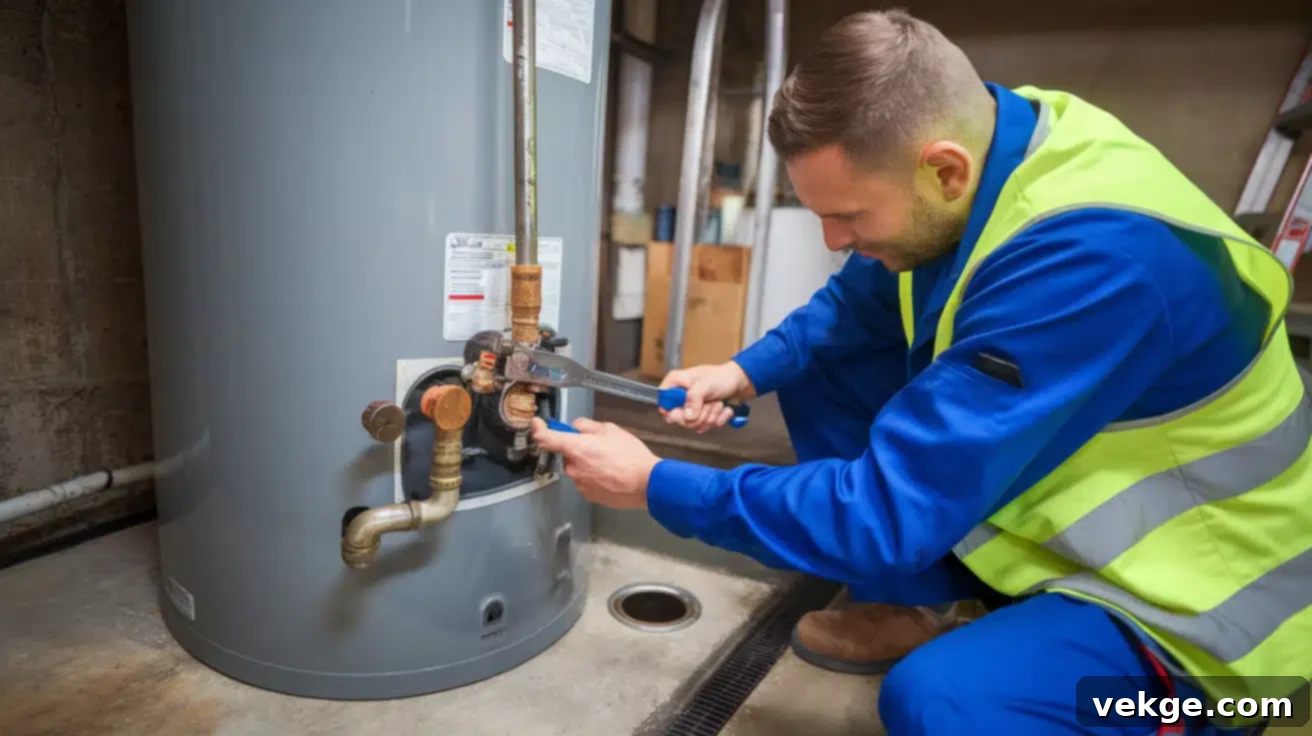
1. Regular Flushing and Draining
Annual flushing and draining of your water heater is paramount to preventing sediment buildup, which is a leading cause of noise, reduced efficiency, and premature unit failure. This simple but effective maintenance task should be a routine part of your home care schedule.
To safely flush your water heater:
- Safety First: Turn off the power supply to electric water heaters at the circuit breaker, or turn off the gas supply and set the thermostat to its lowest setting for gas water heaters.
- Connect a Hose: Attach a standard garden hose to the drain valve located at the bottom of the tank. Ensure the other end of the hose leads to a floor drain or outdoors where hot water can safely drain without causing damage.
- Open a Hot Water Tap: Open the closest hot water tap in your home (e.g., in a sink or bathtub) to allow air into the tank, preventing a vacuum and facilitating drainage.
- Drain the Tank: Open the drain valve on the water heater. Let the water flow out completely until it runs clear, indicating that most of the sediment has been removed. You might see discolored or cloudy water initially, especially if it hasn’t been flushed recently.
- Refill and Restore Power: Once drained, close the drain valve and remove the hose. Close the open hot water tap. Slowly refill the tank by opening the cold water supply valve. Listen for the sound of water filling the tank. Once the tank is full (you’ll hear the water stop running), turn the power or gas supply back on and reset the thermostat.
- Check for Leaks: After refilling and restoring power, carefully check around the drain valve and connections for any leaks.
Performing this task annually significantly reduces the risk of sediment-related issues, leading to a quieter, more energy-efficient, and longer-lasting water heater.
2. Install a Water Softener
For homes in regions with hard water, a water softener is an invaluable investment that goes a long way in minimizing mineral deposit buildup not just in your water heater, but throughout your entire plumbing system and appliances. Hard water, rich in dissolved calcium and magnesium ions, is the primary culprit behind limescale and sediment accumulation. These deposits can wreak havoc on heating elements, tank linings, and pipes, leading to noise, decreased efficiency, and ultimately, costly repairs or premature replacement.
By filtering out these hard minerals before they even enter your home’s water supply, a water softener actively prevents sediment buildup in your water heater. This means fewer popping or rumbling noises, more consistent heating, and a longer lifespan for your unit. Beyond noise reduction, soft water offers numerous benefits, including cleaner dishes, softer laundry, and even healthier skin and hair.
3. Tighten Loose Parts and Check Valves
Regularly inspecting and tightening any loose components and ensuring all valves are functioning correctly can prevent many common noises and ensure efficient water heater operation. Vibrations from loose parts can create rattling or humming sounds, while restricted flow from partially closed or faulty valves can lead to whistling or screeching.
To inspect and tighten parts:
- Safety Disconnect: Always turn off the power (for electric) or gas supply (for gas) to the water heater before inspecting or working on any components.
- Check Heating Elements (Electric): For electric models, after draining the tank, inspect the heating elements. Use an appropriately sized wrench to ensure they are securely fastened into the tank. Loose elements can vibrate and cause humming or sizzling.
- Inspect All Valves and Pipes: Examine all water inlet and outlet valves, as well as the T&P valve, to ensure they are fully open and not obstructed. Check all pipe connections for tightness and look for any signs of leaks.
- Secure Pipe Straps and Hangers: Ensure that all pipes leading to and from the water heater are properly secured with pipe straps or hangers. Loose pipes can vibrate against walls or other plumbing, causing banging or rattling noises. Tighten any loose screws or straps to prevent movement.
- Examine the Dip Tube: While less accessible, a loose or broken dip tube (which carries cold water to the bottom of the tank) can sometimes cause rattling. This usually requires professional inspection and repair.
4. Consider a Pressure Reducing Valve (PRV)
If your home experiences consistently high water pressure (above 80 psi), installing a pressure reducing valve on your main water line can significantly reduce stress on your entire plumbing system, including your water heater. High pressure contributes to water hammer, leaks, and accelerated wear on fixtures and appliances. A PRV ensures a consistent, safe pressure, thereby preventing banging noises and extending the life of your plumbing components.
When to Call a Professional
While many water heater noises can be resolved with DIY efforts, some situations warrant immediate professional attention. Knowing when to call a qualified plumber can prevent further damage, ensure your safety, and save you from more costly repairs in the long run.
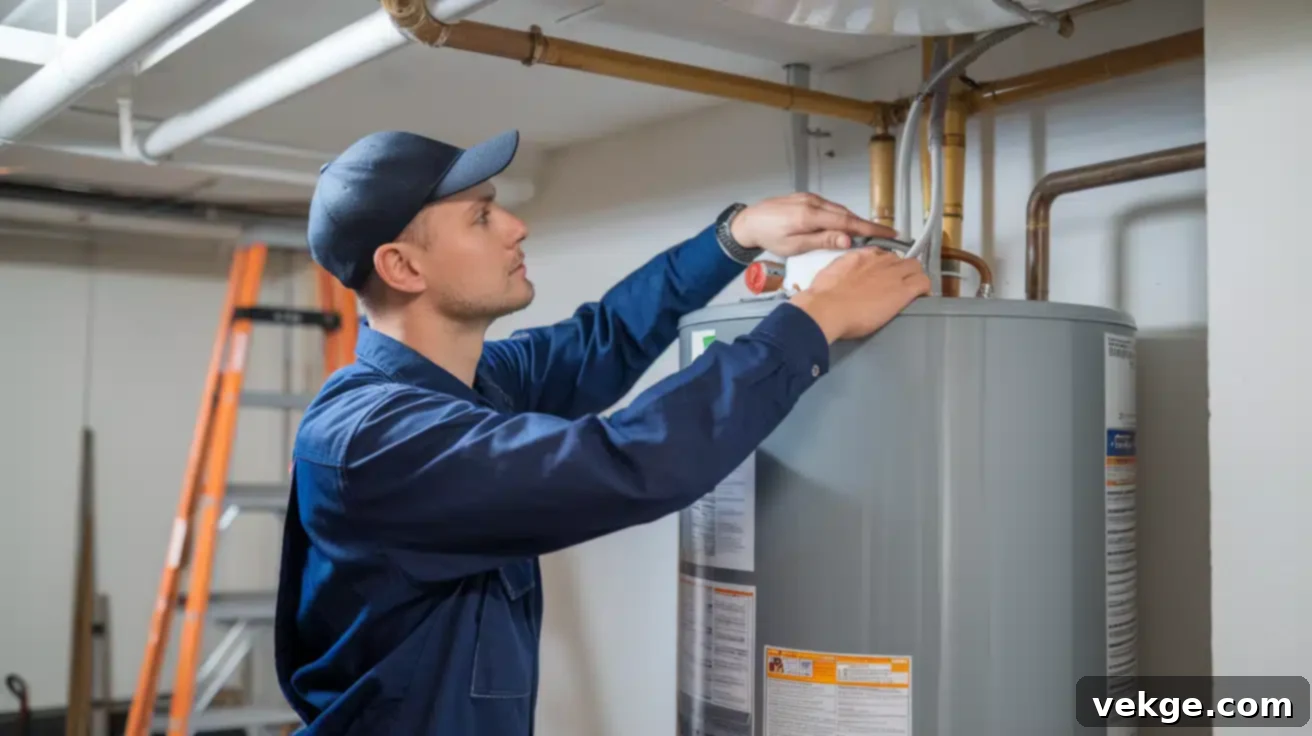
- Persistent or Loud Noises Despite DIY Fixes: If you’ve attempted various DIY solutions like flushing the tank, checking valves, and securing pipes, but your water heater continues to make loud, unusual, or persistent noises, it’s a clear sign to consult a professional. These sounds may indicate internal issues that require specialized tools and expertise to diagnose and repair, such as a failing dip tube, an aging anode rod, or internal tank corrosion. Prompt professional attention can prevent further damage and ensure safe operation.
- Leakage or Rust: Any visible leaks, even small drips, or the presence of rust on or around your water heater demand immediate professional help. Leaks can lead to significant water damage, mold growth, and compromise the structural integrity of your home. Rust, particularly if it’s on the tank itself, might signal internal corrosion and indicate that the tank is failing. Ignoring these signs can lead to a catastrophic tank rupture. Regular expert inspections can catch these issues early, potentially extending the heater’s life or allowing for a planned replacement.
- Major Component Failure or Alarming Sounds: Sounds like screaming, booming, a very loud single pop, or gas smells suggest serious internal problems that require immediate professional intervention.
- Screaming or High-Pitched Whine: Often points to extreme pressure buildup or a failing T&P valve, which is a significant safety hazard.
- Booming Sound: Can indicate a large amount of sediment causing superheated steam to explode beneath it, or a serious pressure issue.
- Gas Smell: If you have a gas water heater and detect the smell of natural gas or rotten eggs, evacuate your home immediately and contact your gas company and a qualified plumber. This is a severe safety hazard due to potential carbon monoxide poisoning or explosion risk.
These types of issues could stem from critical component failures, dangerous pressure levels, or severe sediment accumulation. Prompt action by a certified technician is essential to prevent costly repairs and, more importantly, to maintain the safety of your plumbing system and your home.
- Reduced Hot Water Supply or No Hot Water: While not directly a noise issue, if accompanied by noises, it could indicate a failing heating element (electric), a pilot light issue (gas), or severe sediment buildup impacting performance, all of which benefit from professional diagnosis.
Conclusion
Your water heater is an indispensable appliance, providing the comfort and convenience of hot water for your daily routines. When it starts producing unusual noises, it’s more than just an annoyance; it’s a signal that something might be amiss. By understanding the common causes of these sounds – from sediment buildup and water hammer to loose components and restricted flow – you are well-equipped to diagnose and address most issues effectively.
Remember, proactive maintenance is your best defense against a noisy water heater. Regular tasks such as flushing the tank annually, checking for and tightening loose connections, and considering a water softener in hard water areas can significantly extend the lifespan of your unit and ensure it operates quietly and efficiently for years to come. These simple measures not only prevent troublesome noises but also improve energy efficiency and reduce the likelihood of costly breakdowns.
While many problems can be resolved with straightforward DIY solutions, it’s crucial to recognize when a professional’s expertise is required. Do not hesitate to call a certified plumber if you encounter persistent loud noises despite your efforts, visible leaks, signs of rust, a gas smell, or alarming sounds that suggest major component failure. Their specialized knowledge and tools can accurately diagnose complex issues and provide safe, lasting repairs, potentially saving you from significant damage and expense down the line.
By staying attentive to your water heater’s performance and prioritizing its maintenance, you’ll ensure a reliable supply of hot water and, most importantly, restore peace and quiet to your home. Listen to your water heater, stay proactive, and enjoy the quiet comfort of a well-maintained system.
Frequently Asked Questions
How to Soundproof a Water Heater?
While fixing the root cause of noise is always the primary solution, if your water heater emits a general hum or vibration that you wish to dampen, you can soundproof it to some extent. The most effective method is to wrap it with a thick, soft, insulating material specifically designed for this purpose, such as a water heater blanket or heavy-duty soundproofing wrap. These materials help to absorb vibrations and reduce airborne noise. Ensure that any vents (especially on gas heaters) are not obstructed, and always follow the manufacturer’s safety guidelines for any wrapping material to prevent overheating or fire hazards.
How Do I Stop My Water Heater from Being So Loud?
Stopping your water heater from being loud begins with identifying the specific type of noise it’s making. If it’s a humming noise, particularly from an electric heater, it’s often due to a loose heating element; tightening this element should resolve the issue. For popping or rumbling, regular flushing is key to remove sediment. Banging often indicates water hammer, which can be mitigated with arrestors or pressure adjustments. For screeching or whistling, check and fully open all valves. Once you’ve accurately diagnosed the specific sound, you can apply the appropriate solution detailed in this guide to quiet your system effectively.
Should I Flush My Water Heater Every Year?
Yes, it is highly recommended that you flush your water heater annually. This routine maintenance task is crucial for removing sediment buildup, which is a major contributor to noise, reduced heating efficiency, and premature wear on heating elements and the tank itself. Regular flushing helps to extend the lifespan of your water heater, improve its energy performance, and prevent those bothersome popping and rumbling sounds. In areas with particularly hard water, you might even consider flushing every six months to combat faster sediment accumulation.
Can a New Water Heater Have Sediment?
Yes, absolutely. While it might seem counterintuitive for a *new* unit, sediment can begin accumulating very quickly, especially in homes with hard water. The minerals (calcium, magnesium) and tiny particles present in your water supply continuously enter the tank. Over time, these particles settle to the bottom. Even if the tank itself is new, the water flowing into it isn’t, and if it’s hard water, sediment formation starts from day one. This is why regular flushing is important even for relatively new units, to prevent significant buildup.
